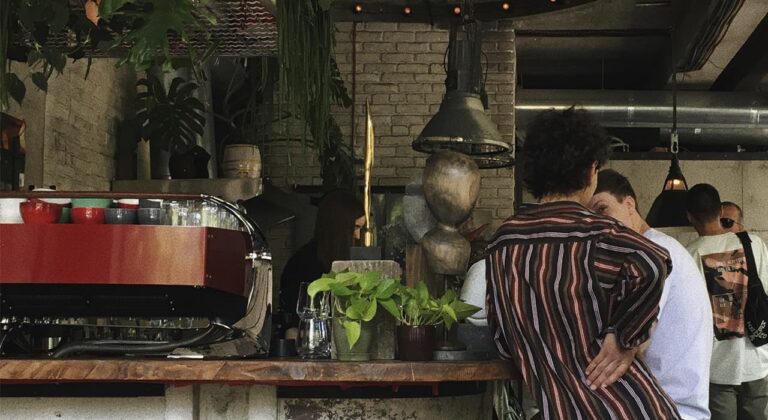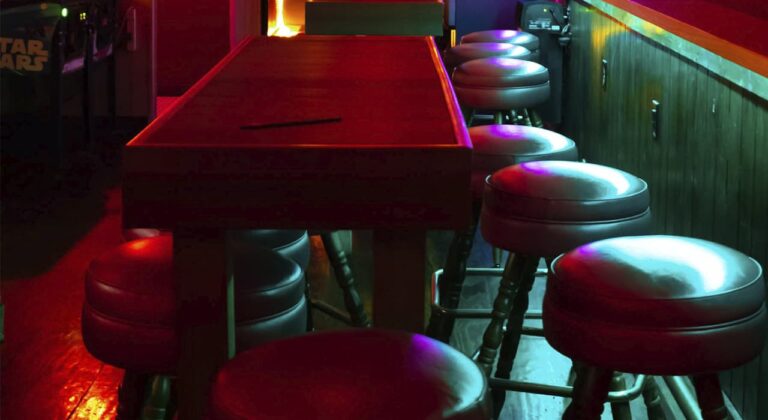“Old Beer House McSorlis is one of New York City’s oldest bars. It is located in Manhattan in the East Village neighborhood at 15 East 7th Street. The establishment is one of the last “Men Only” bars. The bar was forced to allow women to enter by court order in 1970.
All sorts of antiques, old newspaper clippings covering the walls, sawdust sprinkled floors, and Irish waiters and bartenders gave McSorleys an old New York atmosphere. Not a single souvenir has been removed from the walls of the bar since 1910. Many items are personal items of famous personalities. For example, the handcuffs strapped to the bar rail belonged to Harry Houdini. There are “lucky bones” hanging from the ceiling of the bar. They are believed to have been hung by young men leaving for World War I. Those who returned removed their bones. So the remaining ones are from those who never returned.
McSorleys has two mottos: “Act normal or get lost” and “We were here before you were born.” Prior to 1970, the motto was “Good ale, raw onions and no ladies.” Raw onions, however, can still be ordered with slices of cheese.
According to New York Magazine, McSorleys Bar is one of the top five historic bars in New York City.
Bar chronology:
1827
John McSorley’s was born: Co-Tyron, Ireland.
1847
Potato Disease Starts on the East of Ireland
1850
Potato blight also reached the northern counties of Ireland.
1851
John McSorley arrives in New York on the ship “The Columnist” from Liverpool.
1854
John McSorley opens a store at 15 North 7th Street in New York City. He calls it The Old House Building.
1855
John McSorley befriends Honor Henley.
1856
The first child, Peter, is born to Honora and John McSorley.
1861
William J. McSorley, John’s favorite son and the son who owns the Old Ale McSorley bungalow, is born.
1864-65
The building at 15 East 7th Street was renovated to become a 5-floor baggage building. John and his family move upstairs through the bar.
1868
Honora McSorley dies at the age of 35, leaving John to fend for his 3 children.
1872
John McSorley becomes friends with Katharine Donovan.
1875
Bill McSorley studies at Ale House. This becomes his first crush.
1882
McSorley’s Inflation is performed at the Theatre Comiqe on Broadway. It features a bar set, owned by a bar named Peter McSorley. He plays over 100 shows.
1905-06
Starts a short experimental period; McSorley’s serves mild drinks together with spirits. The experiment ends as quickly as it began. From this point on, McSorley’s is only an ale house.
1908
The sign above the front doors falls down during the storm. It is replaced with one that reads “Old McSorley’s Spruce.” The word “Hour” is removed.
1910
John McSorley dies in an apartment on the second floor above the bar. He is 83 years old.
1911
Bill McSorlly takes over the Ale House. He begins to make it a sanctuary for his deceased father.
1913
John Sloane shows his painting “Maxorley’s Bar” at the Armory exhibition. It is not sold at the price of 500 dollars.
1920
Prohibition begins. Beer, ale, wine, liquor, and hard cider are illegal. McSorley’s sells what they call Near Beer.
1925
Poet I. Cummings writes the poem “Sitting in McSorley’s”.
1928
John Sloane paints “Saturday Night in McSorley’s”. Everyone seems to be holding a mug.
1932
Catherine Maxorley, the widow of John Maxorley, dies.
1933
Prohibition ends. McSorley’s is still there. Although many bars now admit women. McSorley’s still adheres to its philosophy of “Good ale, raw onions and no women”.
1934
The Fidelio Brewery markets McSorley’s Ale, Stout & Lager.
1936
Bill McSorley sells the bar to Daniel O’Connell, a New York City philanthropist and police officer. O’Connell resigns to become the first non-McSorley to own the place. It doesn’t change much.
1938
Bill McSorley dies.
1939
Daniel O’Connell dies, leaving his salon to his daughter, Dorothy O’Connell Kirwan. Patrons fear that she will renovate and innovate. She does neither, staying away as she promised her father. After some minor management problems, she appoints her husband Harry Kirwan as manager. He would remain in charge until his death.
1940
New Yorker writer Joseph Mitchell visits the Saloon at 15 East 7th Street. He writes the watershed article “The Old House at Home” for the New Yorker. A new life begins for the old saloon.
1943
Joseph Mitchell’s articles are collected in a book entitled The Magnificent Maxorley Saloon.
1943
Life magazine publishes an article with photos about McSorley’s Magnificent Salon.
1954
McSorley’s celebrates its 100th anniversary. Women are still not allowed inside, including the owner. She only visits on Sundays when they are closed.
1960
Dorothy and Harry Kirwan’s son Danny begins his apprenticeship at the bar.
1964
During a visit to Ireland, Harry Kirwan’s car breaks down. Matthew Maher picks him up on the road. Harry promises him a job in New York. Matty goes to New York to work as a waiter and bartender at McSorley’s.
1969
The McSorley’s Old Ale House is sued to allow women to enter.
1970
McSorley’s, under court order and city council law, considers becoming a private club, but gives in to pressure and opens its doors to women. There are no restrooms for women. Danny Kirwan wants his mother to be the first woman to be served. She refuses, citing a promise she made to her father. Prophecies of McSorley’s end are heard around the world.
1974
Dorothy Kirwan dies.
1975
Harry Kirwan dies. The old McSorley El home now belongs to their “favorite son,” as Harry calls him, Danny Kirwan.
1977
Matthew Mager, the night manager of McSorley’s, buys the house from Danny Kirwan. It is now owned by the third family since the opening.
1986
A women’s restroom is installed in the Old House.
1994
Matthew Maher’s daughter, Teresa Maher de la Haba, becomes the first woman to work behind the bar.


